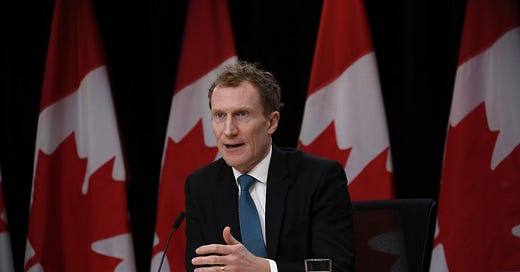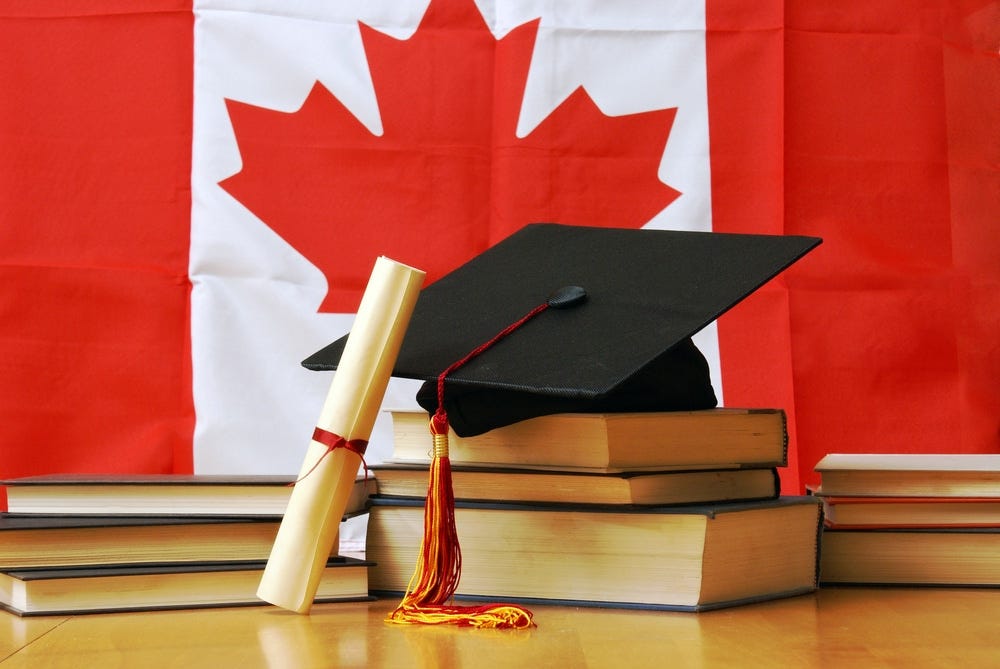International Student Cap 2.0 - What does it mean for Canadian higher education?
The federal government's tinkering with immigration promises to have game-changing impacts on Canada's post-secondary sector ...and ability to attract top talent long-term.
The Bombshell Announcement
Last month, Minister Miller announced tightened restrictions for international students coming to Canada that sparked widespread outcry across the higher education sector.
The new policy — framed as “Strengthening temporary residence programs for sustainable volumes” — announced 3 game-changing elements:
Additional 10% study permit cut for the next two years
Inclusion of graduate and doctoral students in the cap
Tightened eligibility for the Post-Graduate Work Permit program
Let’s tackle these piecemeal, and then explore their implications for Canadian higher education, and beyond.
The ‘Coles Notes’ Summary
+10% Cut in Study Permits
The Minister clarified that study permit applications for 2025 would be further cut down by 10% to just 437,000 annually for the next two years. His previous announcement from January 2024 initially had this number much higher (ie 485,000 new permits for 2024).
In his statement, Minister Miller gave no further explanation on why this 10% cut was selected, stating only that this was targeting the goal of “stabilizing the intake cap for 2026” to match that of 2025. Ultimately, this announcement fits into the government’s Immigration Levels Plan, to bring the number of temporary residents down to 5% of Canada’s total population (down from current 6.5%).
Inclusion of graduate and doctoral students in the cap
Unlike the previous announcement, graduate students (eg Master’s programs) and doctoral students (eg PhD programs) will now be included in the study permit application cap (ie the total cap of 437,000 for 2025, and for 2026).
Tightened eligibility for the Post-Graduate Work Permit program
The new change means that firstly, all PGWP applicants will have to demonstrate higher English or French proficiency scores (ie minimum CLB level 7 for university grads and CLB 5 for college grads). Second, the federal government has now removed open eligibility for PGWP for graduates from Canadian public colleges. In other words, graduates from public college programs will remain eligible for PGWP only if they graduate from a field of study linked to labour market targets (ie high in-demand occupations).
The federal government provided a list of these 966 eligible programs, featuring STEM, healthcare, trade, and transportation fields of study.
The Long Term Implications
#1 - Cutting Permits Down by 10%
Naturally, this cap announcement drew most of the spotlight, as it should. Certainly nothing like this has been attempted in recent memory. In fact, if you look at the last 20 years of federal immigration policy — especially in this last decade — the federal government has been hellbent on ramping up immigration numbers, using it to offset Canada’s aging domestic population, low fertility rates, and dwindling labour productivity.
However, what remains most concerning to me — with this announcement — is that there has been no transparency as to why the 10% figure was proposed. Why not 5%? Or 2.5%? The Backgrounder attached to the announcement does not make this clear, nor offer any other explanation.
My hunch is that based on population projections of 41.3 million for 2025 and 41.6 million for 2026 (in a medium growth scenario), the government figured that a 10% cut in study permits would help bring down total temporary residents numbers to just 5% of the total population.
And yes, if you do the math, it ….somewhat works itself out. With just over 2.6 million non-permanent residents in Canada as of January 1 2024) in a total population of 40.7 million, currently 6.5% of the Canadian population in 2024 are temporary residents. If you cut these numbers down by 10%, that would give just over 5.8% for 2026. Not perfect. But again, these calculations should be made public in the policy announcement, or — at the very least — connected to the Backgrounder.
#2 - Including Grad Students in the Cap
It’s important to keep in mind just how many of our graduate students are international students. Of the 229,212 Master’s and 61,800 doctoral students currently enrolled in graduate programs across the country, 79.1% of doctoral students and 21.3% of Master’s students are international students.
By including graduate and doctoral students in this study permit application cap, Canada is becoming a less appealing option for top talent to come and choose as a study destination, particularly for Indian students.
And sadly, we are already seeing the devastating impacts of this policy. Earlier this month, Ontario’s universities forecasted nearly $1 billion in financial losses over the next 2 years as a result of the new international student cap. All you need to do is look at Alex Usher’s latest article on the issue. It’s title? Carnage.
#3 - Tightening PGWP Eligibility
This policy change has perhaps the longest, most crucial impact on long-term outcomes for both Canadian immigration and its higher education sector. For years, Global Affairs Canada has been pitching the international student program as a gateway to citizenship, and one powerful element of this strategy was through Canada’s Post-Graduate Work Permit (PGWP) program. The PGWP enables international student graduates to legally reside and work in Canada a few extra years after graduation, enabling graduates with the time needed to build up work experience, credentials, and other skills needed for a successful permanent residency application.
However, given the torrent of public backlash against immigration numbers — largely fuelled by media outlets alleging that immigrants caused a housing crisis — the federal government has made an about turn with immigration.
The clamping-down on PGWP eligibility is — ostensibly — supposed to better connect higher education learning with practical job outcomes (for the benefit of the Canadian workforce). However, this policy specifically targets Canadian public colleges (and a handful of university programs), leaving universities and their Bachelor’s, Master’s and PhD alone.
If we’re talking about applying this policy to the whole post-secondary sector, that’s fine. Minister Miller himself has floated the idea that he’s targeting “bad actors” within the sector. But ultimately it’s public colleges & polytechnics — as a whole — who are paying the price.
CBIE President Larissa Bezo summarized the sector’s anxieties, saying: “We are gravely concerned that the restrictions placed on colleges — and polytechnics by default — illustrate a fundamental undervaluing and misunderstanding of the role of colleges in addressing labour market and community needs across Canada.”
According to Colleges & Institutes Canada, this policy will “make it fundamentally impossible to align our programs to what our communities need”.
Not only have key stakeholders pushed back against the new PGWP policy, but students themselves. In fact, the PGWP policy has been heavily criticized by students from Canada’s single biggest source of international students, India. This should be of particular concern, given than approximately 1 in 2 international students in Canada is of Indian origin.
Next Steps
With the launch of the 2024-2025 Immigration Levels Plan coming up this November 1st, this will be a crucial time for the federal government to think critically about their recent immigration approach. You can’t have two decades of promoting the International Student Program as a pathway to citizenship and then suddenly cut accepted permit applications in half.
International students are a critical part of our communities. In 2022 alone, international students generated over 361,230 jobs to Canada’s workforce, and contributed $7.4 billion in tax revenue and annual spending. 6 in 10 international students with work experience become landed immigrants within 10 years.
While it is important to ensure international recruitment is ethically regulated, and that students have the resources and support they need to integrate into Canadian society, this must be done at a sustainable rate. The government should permanently halt further drops in study permit applications beyond 2026, matching increases with annual population growth (currently +3.2%) .
Lastly, Minister Miller and the folks at IRCC should consider excluding graduate students (both Master’s and doctoral) from the international student cap, given that approximately 2 in 3 grad students are international students (63.4%), and given their immense value as top talent and cutting-edge innovators in Canada.
Draconian measures will only make Canada less appealing as a destination for education and economic prosperity, but if we can think long-term about how to best attract, support, and retain top talent — the sky is the limit.










